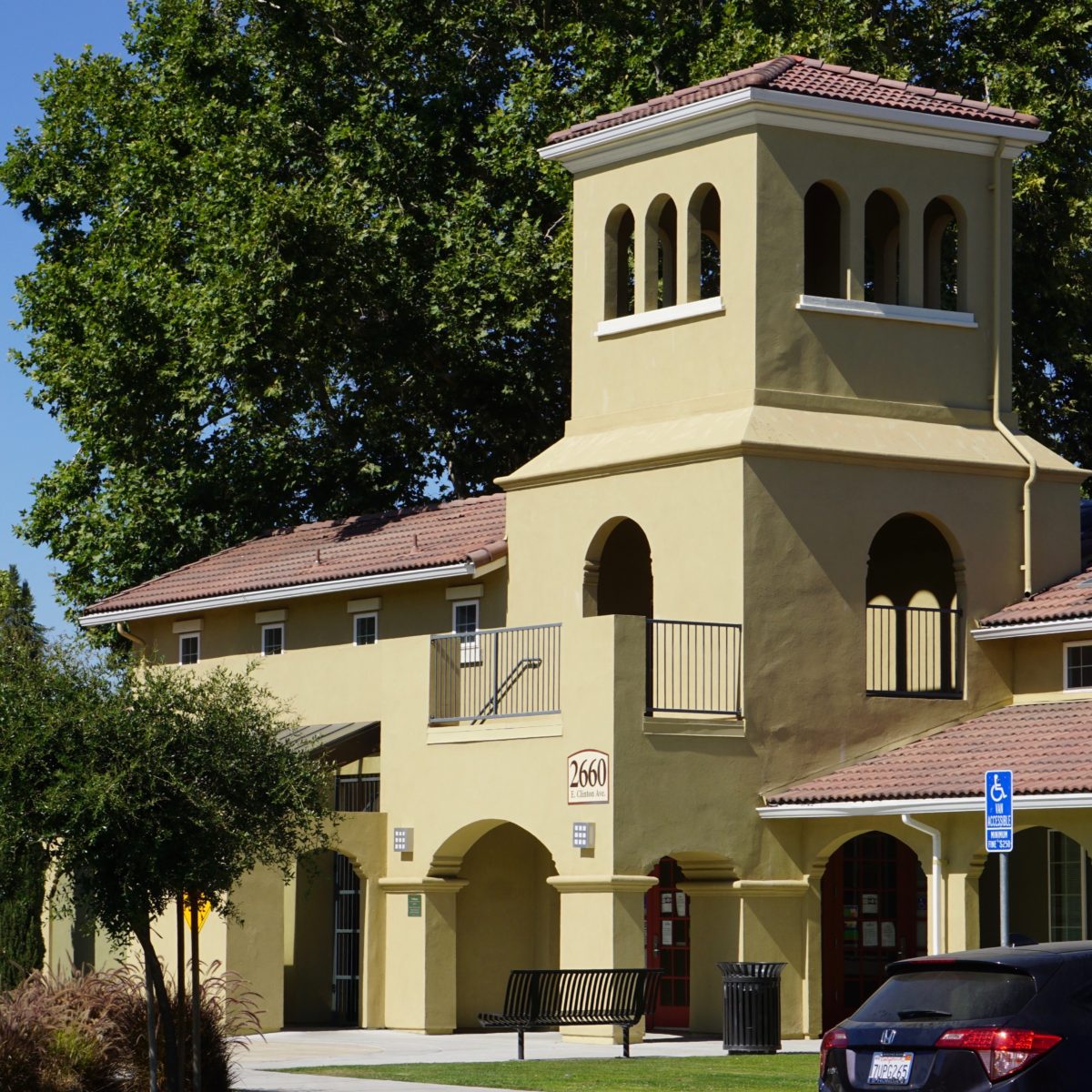
Parc Grove Commons first began allowing tenants in back in 2011 and has 363 units. The highest the rent goes is 60 percent of market rate. Photo by Edward Smith.
Of the 38,000 individuals and families seeking assistance at the Fresno Housing Authority, only 1,100 applicants will be able to find housing using a voucher, according to Preston Prince, CEO of the Fresno Housing Authority.
In 2013, Fresno County, along with every other county in the state, created the Regional Housing Needs Assessment (RHNA) to declare to the state the direction it would take in providing housing amidst increasing housing prices.
Housing, especially affordable housing, is an industry that involves multiple industries and cooperation with government agencies. Building the tens of thousands of housing units needed to accommodate Fresno County’s population as it approaches 7 million means securing highly competitive grant money in order to make affordable housing feasible.
“It’s a problem that snowballs because people are not getting into the homeownership market in an entry-level fashion,” said Tom Collishaw, president and CEO of Self-Help Enterprises in Visalia. “So they continue to rent and there’s not enough units being built so the rents go up—it’s a supply and demand issue. And then folks at the lowest end of the scale really get left with nothing. It’s a circular problem.”
Fresno County needs an additional 41,108 rental units to meet the demand, according to National Low Income Housing Coalition, based on 2016 data.
Fresno County allotted 21,030 more units of housing across four income groups by the end of 2023 in order to meet its RHNA requirements. Since 2013, only 6,021 have been built.
While the city of Fresno may have met its zoning requirements to allow for that growth, getting those units built takes dollars that are getting harder to come by.
California breaks down the housing targets into units that fall into four different brackets, based on the area median income (AMI). For Fresno, the National Low Income Coalition put that number at $55,500 a year. Fresno still needs 7,658 units priced affordably enough by 2021 for those considered in the bottom-most income bracket, the “extremely low income level,” which make 0-50 percent of AMI, according to the Annual Progress Report to the California Department and Housing and Community Development. Fresno still needs to come up with 5,426 units in the low (50-80 percent of AMI), 1,723 units in moderate (80-120 percent of AMI) and 6,193 units in above moderate (above 120 percent).
Since 2013, 313 units for the extremely low-income bracket have been built. No units brought online during 2017. Not opening up availability could mean leaving people already struggling to live behind.
“We’ve seen that people who own homes and gain equity in their homes over time, their kids do better because they have more flexibility financially,” said Collishaw.
But developers often need subsidies and grants needs to offset market rates. In many cases, the Tax Cut and Jobs Act of 2017 lessened the incentive for investors to bring capital to projects.
One of the more recent developments was a housing project in Reedley. That might have gotten $10 million in tax credits previously, but investors now have less incentive to buy tax credits due to the decreased tax liability corporations face following the tax cuts.
“Now its going to get $9 million in tax credits,” said Prince at the Fresno Housing Authority. “That’s about a million-dollar difference, which may not sound like a lot, but that means that the housing authority or a private developer has to make up for it.”
Where offers for tax credits might have brought in $1.05 for every dollar in tax credits before the recently passed tax bill, the housing authority is now seeing about $.90 for every dollar in tax credits.
“It’s just worth less to them,” Prince said.
So for every million dollars in tax credits, the housing authority may have gotten $1.5 million in investment. It might now get only $900,000.
“We had letters of intent signed with investors and the election happened. They came back in December, set to close in January, and unilaterally reduced their investment,” said Prince.
Part of getting those tax credits comes with demonstrating the availability of other funds. Getting the highly competitive 9 percent credit means getting more than just state dollars.
To get a sense of how competitive they can be, the Fresno Housing Authority had only one project approved in the Central Valley in the last round of tax credits. Self-Help Enterprises’ project was denied, according to Collishaw.
In order to compete, applicants have to show the State Tax Credit Allocation Commission they can raise other funds, and especially with the 9 percent credit, eligible funds are very limited.
“It’s a fight for resources because the resources are never enough,” Collishaw said.
Those tax credits are the primary way developers acquire funding.
For the 4 percent credit, the amount of equity a developer can raise is greatly reduced. While 9 percent credits might garner between 60-70 percent of equity, the 4 percent credit will not get much more than 35 percent.
The hope is though that upcoming legislation might help. Governor Brown signed Senate Bill 2 in November of last year, which uses recordation fees to fund homeless and affordable projects in cities. Governor Brown also signed Senate Bill 3, which voters will have to afford this coming November. SB 3 passes a $4 billion bond for veterans and affordable housing. More money from the state will make the 4 percent credit far more viable as the housing authority or Self-Help Enterprises can leverage more state funds.
If a 4 percent tax credit project generates 35 percent of equity, the maximum amount of equity from a mortgage is not going to be much more than $3 million on a $10 million project.
“The rents don’t necessarily justify that loan,” said Prince. “So you just go into a loan that’s pretty scary.”








